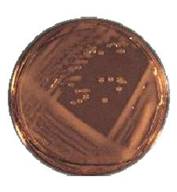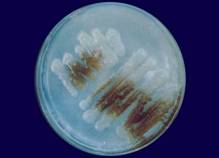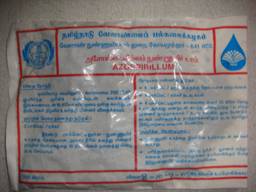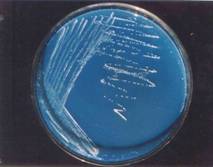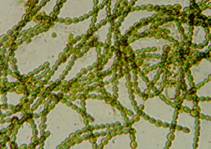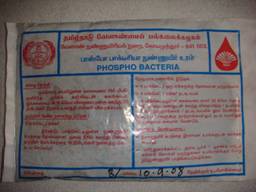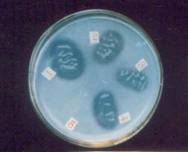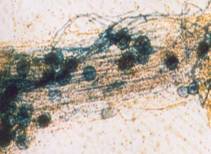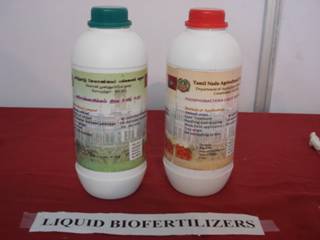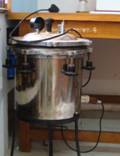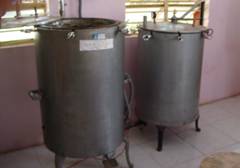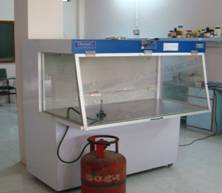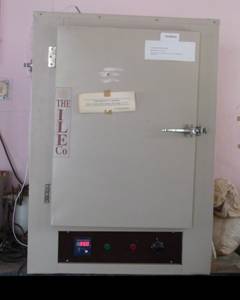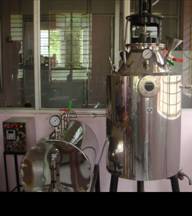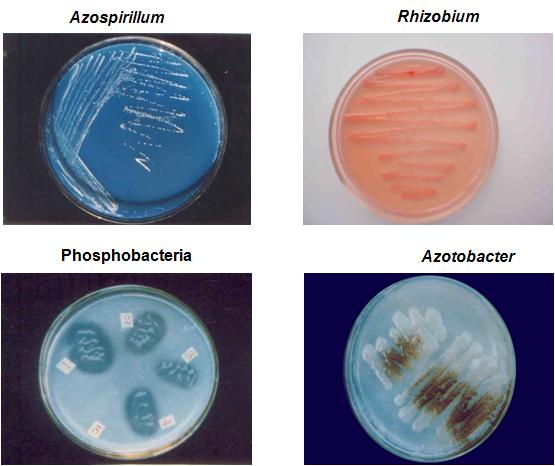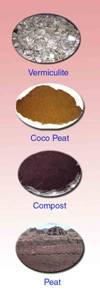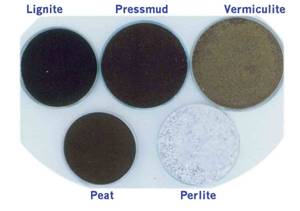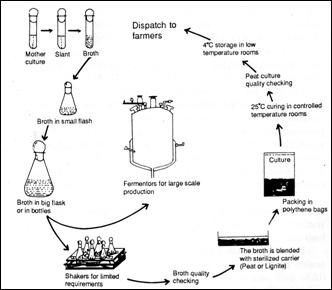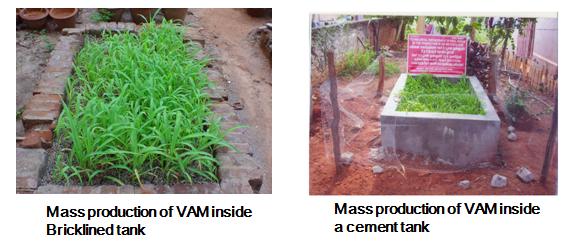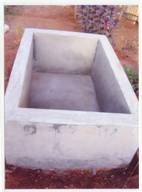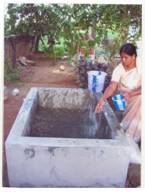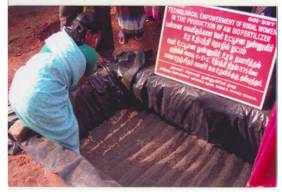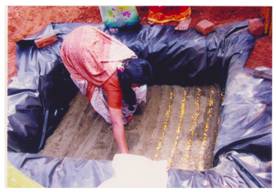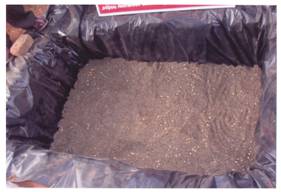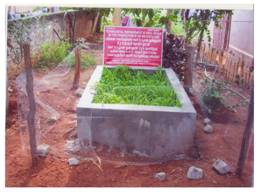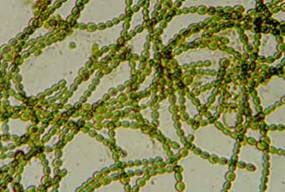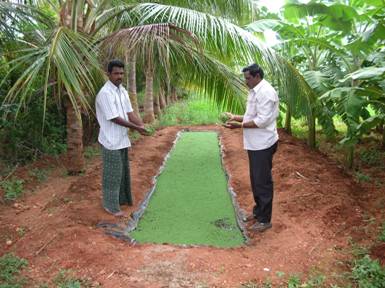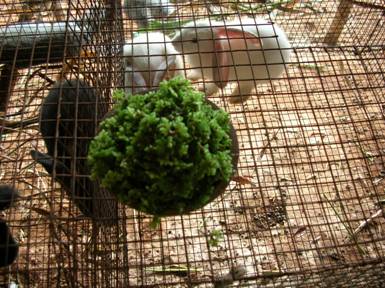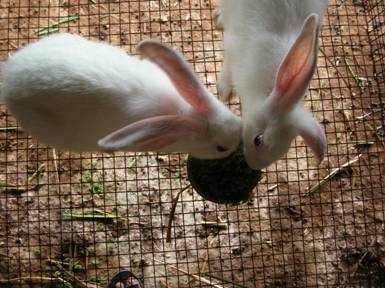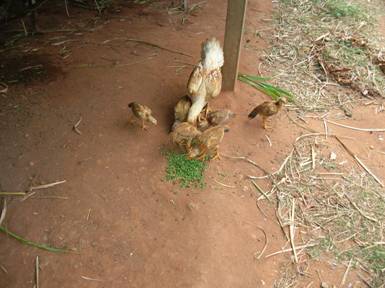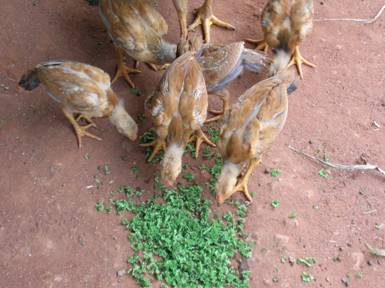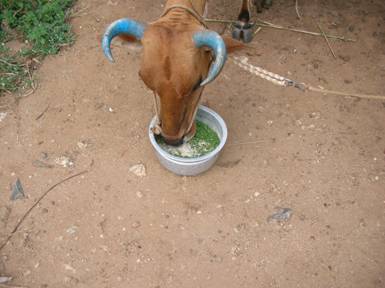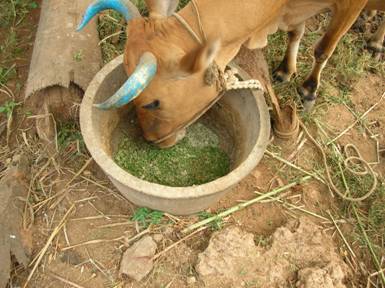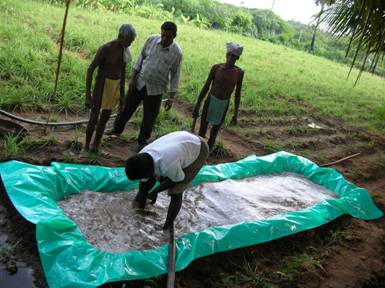 |
|||||||||||||||||||||||||||||||||||||||||||||||||||||||||||||||||||||||||||||||||||||||||||||||||||||||||||||||||||||||||||||||||||||||||||||||||||||||||||||||||||||||||||||||||||||||||||||||||||||||||||||||||||||||||||||||||||||||||||||||||||||||||||||||||||||||||||||||||||||||||||||||||||||||||||||||||||||||||||||||||||||||||||||||||||||||||||||||||||||||||||||||||||||||||||||||||||||||||||||||||||||||||||||||||||||||||||||||||||||||||||||||||||||||||||||||||||||||||||||||||||||||||||||||||||||||||||||||||||||||||||||||||||||||||||||||||||||||||||||||||||||||||||||||||||||||||||||||||||||||||||||||||||||||||||||||||||||||||||||||||||||||||||||||||||||||||||||||||||||||||||||||||||||||||||||||||||||||||||||||||||||||||||||||||||||||||||||||||||||||||||||||||||||||||||||||||||||||||||||||
Components |
| Home | Nutrient Management | Weed Management | Pest Management | Disease Management | Gallery | Contact |
|
Special Technologies |
|||||||||||||||||||||||||||||||||||||||||||||||||||||||||||||||||||||||||||||||||||||||||||||||||||||||||||||||||||||||||||||||||||||||||||||||||||||||||||||||||||||||||||||||||||||||||||||||||||||||||||||||||||||||||||||||||||||||||||||||||||||||||||||||||||||||||||||||||||||||||||||||||||||||||||||||||||||||||||||||||||||||||||||||||||||||||||||||||||||||||||||||||||||||||||||||||||||||||||||||||||||||||||||||||||||||||||||||||||||||||||||||||||||||||||||||||||||||||||||||||||||||||||||||||||||||||||||||||||||||||||||||||||||||||||||||||||||||||||||||||||||||||||||||||||||||||||||||||||||||||||||||||||||||||||||||||||||||||||||||||||||||||||||||||||||||||||||||||||||||||||||||||||||||||||||||||||||||||||||||||||||||||||||||||||||||||||||||||||||||||||||||||||||||||||||||||||||||||||||
| ORGANIC FARMING :: Biofertilizers Technology | |||||||||||||||||||||||||||||||||||||||||||||||||||||||||||||||||||||||||||||||||||||||||||||||||||||||||||||||||||||||||||||||||||||||||||||||||||||||||||||||||||||||||||||||||||||||||||||||||||||||||||||||||||||||||||||||||||||||||||||||||||||||||||||||||||||||||||||||||||||||||||||||||||||||||||||||||||||||||||||||||||||||||||||||||||||||||||||||||||||||||||||||||||||||||||||||||||||||||||||||||||||||||||||||||||||||||||||||||||||||||||||||||||||||||||||||||||||||||||||||||||||||||||||||||||||||||||||||||||||||||||||||||||||||||||||||||||||||||||||||||||||||||||||||||||||||||||||||||||||||||||||||||||||||||||||||||||||||||||||||||||||||||||||||||||||||||||||||||||||||||||||||||||||||||||||||||||||||||||||||||||||||||||||||||||||||||||||||||||||||||||||||||||||||||||||||||||||||||||||||
Organic Farming - Introduction |
Biodynamic Farming |
||||||||||||||||||||||||||||||||||||||||||||||||||||||||||||||||||||||||||||||||||||||||||||||||||||||||||||||||||||||||||||||||||||||||||||||||||||||||||||||||||||||||||||||||||||||||||||||||||||||||||||||||||||||||||||||||||||||||||||||||||||||||||||||||||||||||||||||||||||||||||||||||||||||||||||||||||||||||||||||||||||||||||||||||||||||||||||||||||||||||||||||||||||||||||||||||||||||||||||||||||||||||||||||||||||||||||||||||||||||||||||||||||||||||||||||||||||||||||||||||||||||||||||||||||||||||||||||||||||||||||||||||||||||||||||||||||||||||||||||||||||||||||||||||||||||||||||||||||||||||||||||||||||||||||||||||||||||||||||||||||||||||||||||||||||||||||||||||||||||||||||||||||||||||||||||||||||||||||||||||||||||||||||||||||||||||||||||||||||||||||||||||||||||||||||||||||||||||||||||
Biofertilizers Technology Biofertilizers are defined as preparations containing living cells or latent cells of efficient strains of microorganisms that help crop plants’ uptake of nutrients by their interactions in the rhizosphere when applied through seed or soil. They accelerate certain microbial processes in the soil which augment the extent of availability of nutrients in a form easily assimilated by plants. Very often microorganisms are not as efficient in natural surroundings as one would expect them to be and therefore artificially multiplied cultures of efficient selected microorganisms play a vital role in accelerating the microbial processes in soil. Use of biofertilizers is one of the important components of integrated nutrient management, as they are cost effective and renewable source of plant nutrients to supplement the chemical fertilizers for sustainable agriculture. Several microorganisms and their association with crop plants are being exploited in the production of biofertilizers. They can be grouped in different ways based on their nature and function.
Rhizobium
Rhizobium is a soil habitat bacterium, which can able to colonize the legume roots and fixes the atmospheric nitrogen symbiotically. The morphology and physiology of Rhizobium will vary from free-living condition to the bacteroid of nodules. They are the most efficient biofertilizer as per the quantity of nitrogen fixed concerned. They have seven genera and highly specific to form nodule in legumes, referred as cross inoculation group. Rhizobium inoculant was first made in USA and commercialized by private enterprise in 1930s and the strange situation at that time has been chronicled by Fred (1932). Initially, due to absence of efficient bradyrhizobial strains in soil, soybean inoculation at that time resulted in bumper crops but incessant inoculation during the last four decades by US farmers has resulted in the build up of a plethora of inefficient strains in soil whose replacement by efficient strains of bradyrhizobia has become an insurmountable problem. Azotobacter
Of the several species of Azotobacter, A. chroococcum happens to be the dominant inhabitant in arable soils capable of fixing N2 (2-15 mg N2 fixed /g of carbon source) in culture media. The bacterium produces abundant slime which helps in soil aggregation. The numbers of A. chroococcum in Indian soils rarely exceeds 105/g soil due to lack of organic matter and the presence of antagonistic microorganisms in soil. Azospirillum
Azospirillum lipoferum and A. brasilense (Spirillum lipoferum in earlier literature) are primary inhabitants of soil, the rhizosphere and intercellular spaces of root cortex of graminaceous plants. They perform the associative symbiotic relation with the graminaceous plants. The bacteria of Genus Azospirillum are N2 fixing organisms isolated from the root and above ground parts of a variety of crop plants. They are Gram negative, Vibrio or Spirillum having abundant accumulation of polybetahydroxybutyrate (70 %) in cytoplasm. Five species of Azospirillum have been described to date A. brasilense, A.lipoferum, A.amazonense, A.halopraeferens and A.irakense. The organism proliferates under both anaerobic and aerobic conditions but it is preferentially micro-aerophilic in the presence or absence of combined nitrogen in the medium. Apart from nitrogen fixation, growth promoting substance production (IAA), disease resistance and drought tolerance are some of the additional benefits due to Azospirillum inoculation. Cyanobacteria
Both free-living as well as symbiotic cyanobacteria (blue green algae) have been harnessed in rice cultivation in India. A composite culture of BGA having heterocystous Nostoc, Anabaena, Aulosira etc. is given as primary inoculum in trays, polythene lined pots and later mass multiplied in the field for application as soil based flakes to the rice growing field at the rate of 10 kg/ha. The final product is not free from extraneous contaminants and not very often monitored for checking the presence of desiredalgal flora. Once so much publicized as a biofertilizer for the rice crop, it has not presently attracted the attention of rice growers all over India except pockets in the Southern States, notably Tamil Nadu. The benefits due to algalization could be to the extent of 20-30 kg N/ha under ideal conditions but the labour oriented methodology for the preparation of BGA biofertilizer is in itself a limitation. Quality control measures are not usually followed except perhaps for random checking for the presence of desired species qualitatively. Azolla Azolla is a free-floating water fern that floats in water and fixes atmospheric nitrogen in association with nitrogen fixing blue green alga Anabaena azollae. Azolla fronds consist of sporophyte with a floating rhizome and small overlapping bi-lobed leaves and roots. Rice growing areas in South East Asia and other third World countries have recently been evincing increased interest in the use of the symbiotic N2 fixing water fern Azolla either as an alternate nitrogen sources or as a supplement to commercial nitrogen fertilizers. Azolla is used as biofertilizer for wetland rice and it is known to contribute 40-60 kg N/ha per rice crop. Phosphate solubilizing microorganisms(PSM)
Several soil bacteria and fungi, notably species of Pseudomonas, Bacillus, Penicillium, Aspergillus etc. secrete organic acids and lower the pH in their vicinity to bring about dissolution of bound phosphates in soil. Increased yields of wheat and potato were demonstrated due to inoculation of peat based cultures of Bacillus polymyxa and Pseudomonas striata. Currently, phosphate solubilizers are manufactured by agricultural universities and some private enterprises and sold to farmers through governmental agencies. These appear to be no check on either the quality of the inoculants marketed in India or the establishment of the desired organisms in the rhizosphere. AM fungi
The transfer of nutrients mainly phosphorus and also zinc and sulphur from the soil milleu to the cells of the root cortex is mediated by intracellular obligate fungal endosymbionts of the genera Glomus, Gigaspora, Acaulospora, Sclerocysts and Endogone which possess vesicles for storage of nutrients and arbuscles for funneling these nutrients into the root system. By far, the commonest genus appears to be Glomus, which has several species distributed in soil. Availability for pure cultures of AM (Arbuscular Mycorrhiza) fungi is an impediment in large scale production despite the fact that beneficial effects of AM fungal inoculation to plants have been repeatedly shown under experimental conditions in the laboratory especially in conjunction with other nitrogen fixers. Microorganisms are capable of degrading silicates and aluminum silicates. During the metabolism of microbes several organic acids are produced and these have a dual role in silicate weathering. They supply H+ ions to the medium and promote hydrolysis and the organic acids like citric, oxalic acid, Keto acids and hydroxy carbolic acids which from complexes with cations, promote their removal and retention in the medium in a dissolved state. The studies conducted with a Bacillus sp. isolated from the soil of granite crusher yard showed that the bacterium is capable of dissolving several silicate minerals under in vitro condition. The examination of anthrpogenic materials like cement, agro inputs like super phosphate and rock phosphate exhibited silicate solubilizing bacteria to a varying degree. The bacterial isolates made from different locations had varying degree of silicate solubilizing potential. Soil inoculation studies with selected isolate with red soil, clay soil, sand and hilly soil showed that the organisms multiplied in all types of soil and released more of silica and the available silica increased in soil and water. Rice responded well to application of organic sliceous residue like rice straw, rice husk and black ash @ 5 t/ha. Combining SSB with these residues further resulted in increased plant growth and grain yield. This enhancement is due to increased dissolution of silica and nutrients from the soil. Plant Growth Promoting Rhizobacteria (PGPR) The group of bacteria that colonize roots or rhizosphere soil and beneficial to crops are referred to as plant growth promoting rhizobacteria (PGPR). The PGPR inoculants currently commercialized that seem to promote growth through at least one mechanism; suppression of plant disease (termed Bioprotectants), improved nutrient acquisition (termed Biofertilizers), or phytohormone production (termed Biostimulants). Species of Pseudomonas and Bacillus can produce as yet not well characterized phytohormones or growth regulators that cause crops to have greater amounts of fine roots which have the effect of increasing the absorptive surface of plant roots for uptake of water and nutrients. These PGPR are referred to as Biostimulants and the phytohormones they produce include indole-acetic acid, cytokinins, gibberellins and inhibitors of ethylene production. Recent advances in molecular techniques also are encouraging in that tools are becoming available to determine the mechanism by which crop performance is improved using PGPR and track survival and activity of PGPR organisms in soil and roots. The science of PGPR is at the stage where genetically modified PGPR can be produced. PGPR with antibiotic, phytohormone and siderophore production can be made. Despite of promising results, biofertilizers has not got widespread application in agriculture mainly because of the variable response of plant species or genotypes to inoculation depending on the bacterial strain used. Differential rhizosphere effect of crops in harbouring a target strain or even the modulation of the bacterial nitrogen fixing and phosphate solubilizing capacity by specific root exudates may account for the observed differences. On the other hand, good competitive ability and high saprophytic competence are the major factors determining the success of a bacterial strain as an inoculant. Studies to know the synergistic activities and persistence of specific microbial populations in complex environments, such as the rhizosphere, should be addressed in order to obtain efficient inoculants. In this regards, research efforts are made at Agricultural College and Research Institute, Madurai to obtain appropriate formulations of microbial inoculants incorporating nitrogen fixing, phosphate- and silicate- solubilizing bacteria and plant growth promoting rhizobacteria which will help in promoting the use of such beneficial bacteria in sustainable agriculture. Liquid Biofertilizers
Biofertilizers are such as Rhizobium, Azospirillum and Phosphobacteria provide nitrogen and phosphorous nutrients to crop plants through nitrogen fixation and phosphorous solubilization processes. These Biofertilizers could be effectively utilized for rice, pulses, millets, cotton, sugarcane, vegetable and other horticulture crops. Biofertilizers is one of the prime input in organic farming not only enhances the crop growth and yield but also improves the soil health and sustain soil fertility. At present, Biofertilizers are supplied to the farmers as carrier based inoculants. As an alternative, liquid formulation technology has been developed in the Department of Agricultural Microbiology, TNAU, Coimbatore which has more advantages than the carrier inoculants. Benefits
Rhizobium This belongs to bacterial group and the classical example is symbiotic nitrogen fixation. The bacteria infect the legume root and form root nodules within which they reduce molecular nitrogen to ammonia which is reality utilized by the plant to produce valuable proteins, vitamins and other nitrogen containing compounds. The site of symbiosis is within the root nodules. It has been estimated that 40-250 kg N / ha / year is fixed by different legume crops by the microbial activities of Rhizobium. The percentage of nodules occupied, nodules dry weight, plant dry weight and the grain yield per plant the multistrain inoculant was highly promising Table-2 shows the N fixation rates. Quantity of biological N fixed by Liqiud Rhizobium in different crops
Physical features of liquid Rhizobium
Azospirllium It belongs to bacteria and is known to fix the considerable quantity of nitrogen in the range of 20- 40 kg N/ha in the rhizosphere in non- non-leguminous plants such as cereals, millets, Oilseeds, cotton etc. The efficiency of Azospirillium as a Bio-Fertilizer has increased because of its ability of inducing abundant roots in several pants like rice, millets and oilseeds even in upland conditions. Considerable quantity of nitrogen fertilizer up to 25-30 % can be saved by the use of Azospirillum inoculant. The genus Azospirillum has three species viz., A. lipoferum, A. brasilense and A. amazonense. These species have been commercially exploited for the use as nitrogen supplying Bio-Fertilizers. One of the characteristics of Azospirillum is its ability to reduce nitrate and denitrify. Both A. lipoferum,and A. brasilense may comprise of strains which can actively or weakly denitrify or reduce nitrate to nitrite and therefore, for inoculation preparation, it is necessary to select strains which do not possess these characteristics. Azospirllium lipoferum present in the roots of some of tropical forage grasses uch as Digitaria, Panicum, Brachiaria, Maize, Sorghum, Wheat and Rye. Physical features of liquid Azospirillum
N2 fixing capacity of Azospirillum in the roots of several plants and the amount of N2 fixed by them.
Production of growth hormones Azospirillum cultures synthesize considerable amount of biologically active substances like vitamins, nicotinic acid, indole acetic acids giberllins. All these hormones/chemicals helps the plants in better germination, early emergence, better root development. Role of Liquid Azospirillum under field conditions
Sign of non functioning of Azospirillum in the field
Azotobacter It is the important and well known free living nitrogen fixing aerobic bacterium. It is used as a Bio-Fertilizer for all non leguminous plants especially rice, cotton, vegetables etc. Azotobacter cells are not present on the rhizosplane but are abundant in the rhizosphere region. The lack of organic matter in the soil is a limiting factor for the proliferation of Azotobaceter in the soil. Field experiments were conducted in 1992, 1993 and 1994 during the pre-kharif wet seasons to find out the influence on rice grain yield by the combined use of N- fixing organisms and inorganic nitrogen fertilizer which recorded increase in was yield. Physical features of liquid Azotobacter The pigmentation that is produced by Azotobacter in aged culture is melanin which is due to oxidation of tyrosine by tyrosinase an enzyme which has copper. The colour can be noted in liquid forms. Some of the pigmentation are described below-
Role of liquid Azotobacter in tissue culture The study was conducted by Dr. Senthil et al (2004) on sugarcane variety CO 86032 in Tissue culture Laboratories of Rajashree Sugars and Chemicals Ltd, Varadaraj nagar, Theni, Tamilnadu. The liquid bioinoculants were provided by Dr. Krishnan Chandra, Regional Director, RCOF, Bangalore to evaluate their growth promoting effects on sugarcane micropropagation. He recorded Biometric observations like Plant height, leaf length, width, root length, no of roots. Chemical parameters –Protein, Carbohydrates, N, P,K total biomass and concluded as follows:
Role of liquid Azotobacter as a Bio-control agent Azotobacter have been found to produce some antifungal substance which inhibits the growth of some soil fungi like Aspergillus, Fusarium, Curvularia, Alternaria, Helminthosporium, Fusarium etc. Acetobaceter This is a sacharophillic bacteria and associate with sugarcane, sweet potato and sweet sorghum plants and fixes 30 kgs/ N/ ha year. Mainly this bacterium is commercialized for sugarcane crop. It is known to increase yield by 10-20 t/ acre and sugar content by about 10-15 percent. Effect of liquid Acetobacter diazotrophicus on sugarcane In South India use of Azospirillum and Phospho-bacterium on the cash crop sugarcane is a regular practice for the past few years with a saving of nearly 20 % of chemical nitrogen and phosphate applications. Now, it has been reported that a bacteria Acetobacter diazotrophicus which is present in the sugarcane stem, leaves, soils have a capacity to fix up to 300 kgs of nitrogen. This bacteria first reported in brazil where the farmers cultivate sugarcane in very poor sub-soil fertilized with Phosphate, Potassium and micro elements alone, could produce yield for three consecutive harvests, without any nitrogen fertilizer. They have recorded yield 182- 244 tones per ha. This leads to the assumption that active nitrogen fixing bacteria has associated within the plant. Do’s and Don’t for Entrepreneurs, Dealers and farmers
Liquid Bio-fertlizer application methodology
Seed Treatment Seed Treatment is a most common method adopted for all types of inoculants. The seed treatment is effective and economic. For small quantity of seeds (up to 5 kgs quantity) the coating can done in a plastic bag. For this purpose, a plastic bag having size (21” x 10”) or big size can be used. The bag should be filled with 2 kg or more of seeds. The bag should be closed in such a way to trap the airs as much as possible. The bag should be squeezed for 2 minutes or more until all the seed are uniformly wetted. Then bag is opened, inflated again and shaked gently. Stop shaking after each seeds gets a uniform layer of culture coating. The bag is opened and the seed is dried under the shade for 20-30 minutes. For large amount of seeds coating can be done in a bucket and inoculant can be mixed directly with hand. Seed Treatment with Rhizobium, Azotobacter, Azospirillum, along with PSM can be done. The seed treatment can be done with any of two or more bacteria. There is no side (antagonistic) effect. The important things that has to be kept in mind are that the seeds must be coated first with Rhizobium, Azotobacter or Azospirillum. When each seed get a layer of above bacteria then PSM inoculant has to be coated as outer layer. This method will provide maximum number of each bacteria required for better results. Treatments of seed with any two bacteria will not provide maximum number of bacteria on individual seed. Root dipping For application of Azospirillum/ /PSM on paddy transplating/ vegetable crops this method is used. The required quantity of Azospirillum/ /PSM has to be mixed with 5-10 litres of water at one corner of the field and the roots of seedlings has to be dipped for a minimum of half-an-hour before transplantation. Soil application Use 200ml of PSM per acre. Mix PSM with 400 to 600 kgs of Cow dung FYM along with ½ bag of rock phosphate if available. The mixture of PSM, cow dung and rock phosphate have to be kept under any tree or under shade for over night and maintain 50% moisture. Use the mixture as soil application in rows or during leveling of soil. Dosage of liquid Bio-fertilizers in different crops Recommended Liquid Bio-fertilizers and its application method, quantity to be used for different crops are as follows:
Note: Equipments required for Biofertilizer production In biofertilizer production industry, equipments are the major infrastructure, which involves 70 percent of capital investment. Any compromise on the usage of the following mentioned equipments may finally decline in the quality of biofertilizer.After studying the principle behind the usage of all instruments, some of the instruments can be replaced with a culture room fitted with a U.V.Lamp. Autoclaves, Hot Air Oven, Incubators and sealing machines are indigenously made with proper technical specifications. The correct use of equipments will give uninterrupted introduction with quality inoculum. Essential equipments
It is an apparatus in which materials are sterilized by air free saturated steam (under pressure) at a temperature above 100OC. If the steam pressure inside the autoclave is increased to 15 psi, the temperature will rise to 121°C. this is sufficient to destroy all vegetative cells. Normally all growth medium are sterilized in the autoclave. Laminar air flow chamber
Laminar air flow chamber provides a uniform flow of filtered air. This continuous flow of air will prevent settling of particles in the work area.Air borne contamination is avoided in this chamber. Culture transfers and inoculation can be done here. BOD incubators
Incubators providing controlled conditions (light, temperature, humidity, etc.) required for the growth and development of microorganisms. Multiplication of starter culture can be done in this instrument. Rotary shaker It is used for agitating culture flasks by circular motion under variable speed control. Shaking provides aeration for growth of cultures. Shakers holding upto 20-50 flasks are generally used. The capacity of the shaker may be increased if it is a double- decker type. Hot air oven Hot air oven is meant for sterilizing all glassware materials. Dry heat is used in this apparatus to sterilize the materials. Normally 180OC is used for two hours for sterilizing glasswares. pH meter An instrument for measuring pH of the solution using a 0-14 scale in which seven represents neutral points, less than seven is acidity (excess of H‘ over OH-) and more than seven is alkality (excess of OH- over H‘ ) useful in adjusting the pH of the growth medium. Refrigerator This equipment is used preserving all mother cultures used for biofertilizer production. The mother culture is periodically sub-cultured and stored in the refrigerator for long- term usage. Fermentor
A fermentor is the equipment, which provides the proper environment for the growth of a desired organism. It is generally a large vessel in which, the organism may be kept at the required temperature, pH , dissolved oxygen concentration and substrate concentration. Different models of fermentors are available depending upon the necessity. A simple version model contains steam generator, sterilization process devices and agitator. A sophisticated fermentor contains pH regulator, oxygen level regulator, anti-foam device, temperature controller, etc. 3. Mass production of Bacterial Biofertilizer
Biofertilizers are carrier based preparations containing efficient strain of nitrogen fixing or phosphate solubilizing microorganisms. Biofertilizers are formulated usually as carrier based inoculants. The organic carrier materials are more effective for the preparation of bacterial inoculants. The solid inoculants carry more number of bacterial cells and support the survival of cells for longer periods of time.
Culturing of Microorganisms Although many bacteria can be used beneficially as a biofertilizer the technique of mass production is standardizedfor Rhizobium, Azospirillum, Azotobacter and phosphobacteria. Rhizobium : Yeast extract mannitol broth. Growth on Congo red yeast extract mannitol agar medium
Add 10 ml of Congo red stock solution (dissolve 250 mg of Congo red in 100ml water) to 1 liter after adjusting the PH to 6.8 and before adding agar. Rhizobium forms white, translucent, glistening, elevated and comparatively small colonies on this medium. Moreover, Rhizobium colonies do not take up the colour of congo red dye added in the medium. Those colonies which readily take up the congo red stain are not rhizobia but presumably Agrobacterium, a soil bacterium closely related to Rhizobium. Azospirillum : Dobereiner's malic acid broth with NH4Cl (1g per liter) Composition of the N-free semisolid malic acid medium
Waksman medium No.77 (N-free Mannitol Agar Medium for Azotobacter)
Phosphobacteria : Pikovskaya’s Broth
The broth is prepared in flasks and inoculum from mother culture is transferred to flasks. The culture is grown under shaking conditions at 30±2°C as submerged culture. The culture is incubated until maximum cell population of 1010 to 1011 cfu/ml is produced. Under optimum conditions this population level could be attained with in 4 to 5 days for Rhizobium; 5 to 7 days for Azospirillum; 2 to 3 days for phosphobacteria and 6-7 days for Azotobacter. The culture obtained in the flask is called starter culture. For large scale production of inoculant, inoculum from starter culture is transferred to large flasks/seed tank fermentor and grown until required level of cell count is reached. Inoculum preparation
Processing of carrier material The use of ideal carrier material is necessary in the production of good quality biofertilizer. Peat soil, lignite, vermiculite, charcoal, press mud, farmyard manure and soil mixture can be used as carrier materials. The neutralized peat soil/lignite are found to be better carrier materials for biofertilizer production The following points are to be considered in the selection of ideal carrier material.
Preparation of carrier material
Mixing the carrier and the broth culture and packing Inoculant packets are prepared by mixing the broth culture obtained from fermentor with sterile carrier material as described below: Preparation of Inoculants packet
Schematic representation of mass production of bacterial biofertilizers Specification of the polythene bags
Storage of biofertilizerpacket
Mass production of Mycorrhizal biofertilizer
The commercial utilization of mycorrhizal fungi has become difficult because of the obligate symbiotic nature and difficulty in culturing on laboratory media. Production of AM inoculum has evolved from the original use of infested field soils to the current practice of using pot culture inoculum derived from the surface disinfected spores of single AM fungus on a host plant grown in sterilized culture medium. Several researches in different parts of the world resulted in different methods of production of AM fungal inoculum as soil based culture as well as carrier based inoculum. Root organ culture and nutrient film technique provide scope for the production of soil less culture. As a carrier based inoculum, pot culture is widely adopted method for production. The AM inoculum was prepared by using sterilized soil and wide array of host crops were used as host. The sterilization process is a cumbersome one and scientists started using inert materials for production of AM fungi. The researchers tried use of perlite, montmorillonite clay etc., In TNAU vermiculite was tried as substrate for the replacement of soil sterilization, which resulted in the best method of inoculum production. Method of production
Tank for mass multiplication of AM
Sprinkling of water in tank with vermiculite
Making of furrows to sow maize seeds
Sowing the seeds in furrows
View of the maize sown AM pit
Vermiculite contained raised AM infected maize plants
AM fungi Nursery application: 100 g bulk inoculum is sufficient for one metre square. The inoculum should be applied at 2-3 cm below the soil at the time of sowing. The seeds/cutting should be sown/planted above the VAM inoculum to cause infection. For polythene bag raised crops: 5 to 10 g bulk inoculum is sufficient for each packet. Mix 10 kg of inoculum with 1000 kg of sand potting mixture and pack the potting mixture in polythene bag before sowing. For out –planting: Twenty grams of VAM inoculum is required per seedling. Apply inoculum at the time of planting. Mass production and field application of cyanobacteria
Blue green algal inoculation with composite cultures was found to be more effective than single culture inoculation. A technology for mass scale production of composite culture of blue green algae under rice field condition was developed at TNAU and the soil based BGA inoculum could survive for more than 2 years. At many sites where algal inoculation was used for three to four consecutive cropping seasons, the inoculated algae establish well and the effect persisted over subsequent rice crop. Technologies for utilizing nitrogen fixing organisms in low land rice were the beneficial role of blue green algal inoculation in rice soils of Tamil Nadu. The blue green algal inoculum may be produced by several methods viz., in tubs, galvanized trays, small pits and also in field conditions. However the large-scale production is advisable under field condition which is easily adopted by farmers. I. Multiplication in trays
II. Multiplication under field condition Materials
Procedure Select an area of 40 m2 (20m x 2m) near a water source which is directly exposed to sunlight.
Observations The floating algal flasks are green or blue green in colour. From each harvest, 30 to 40 kg of dry algal flakes are obtained from the plot. Method of inoculation of BGA in rice field Blue green algae may be applied as soil based inoculum to the rice field following the method described below.
Observation A week after BGA inoculation, algal growth can be seen and algal mat will float on the water after 2-3 weeks. The algal mat colour will be green or brown or yellowish green. Mass production and field application of Azolla Azolla is a free-floating water fern that floats in water and fixes atmospheric nitrogen in association with nitrogen fixing blue green alga Anabaena azollae. Azolla fronds consist of sporophyte with a floating rhizome and small overlapping bi-lobed leaves and roots. Rice growing areas in South East Asia and other third World countries have recently been evincing increased interest in the use of the symbiotic N2 fixing water fern Azolla either as an alternate nitrogen sources or as a supplement to commercial nitrogen fertilizers. Azolla is used as biofertilizer for wetland rice and it is known to contribute 40-60 kg N ha-1 per rice crop. The agronomic potential of Azolla is quite significant particularly for rice crop and it is widely used as biofertilizer for increasing rice yields. Rice crop response studies with Azolla biofertilizer in the People’s Republic in China and in Vietnam have provided good evidence that Azolla incorporation into the soil as a green manure crop is one of the most effective ways of providing nitrogen source for rice. The utilization of Azolla as dual crop with wetland rice is gaining importance in Philippines, Thailand, Srilanka and India. The important factor in using Azolla as a biofertilizer for rice crop is its quick decomposition in soil and efficient availability of its nitrogen to rice. In tropical rice soils the applied Azolla mineralizes rapidly and its nitrogen is available to the rice crop in very short period. The common species of Azolla are A. microphylla, A. filiculoides, A. pinnata, A. caroliniana, A. nilotica, A. rubra and A. mexicana. I. Mass multiplication of Azolla under field conditions A simple Azolla nursery method for large scale multiplication of Azolla in the field has been evolved for easy adoption by the farmers. Materials
Procedure
II. Method of inoculation of Azolla to rice crop The Azolla biofertilizer may be applied in two ways for the wetland paddy. In the first method, fresh Azolla biomass is inoculated in the paddy field before transplanting and incorporated as green manure. This method requires huge quantity of fresh Azolla. In the other method, Azolla may be inoculated after transplanting rice and grown as dual culture with rice and incorporated subsequently. A. Azolla biomass incorporation as green manure for rice crop
4. Application of Biofertilizers 1. Seed treatment or seed inoculation Seed treatment One packet of the inoculant is mixed with 200 ml of rice kanji to make a slurry. The seeds required for an acre are mixed in the slurry so as to have a uniform coating of the inoculant over the seeds and then shade dried for 30 minutes. The shade dried seeds should be sown within 24 hours. One packet of the inoculant (200 g) is sufficient to treat 10 kg of seeds. Seedling root dip This method is used for transplanted crops. Two packets of the inoculant is mixed in 40 litres of water. The root portion of the seedlings required for an acre is dipped in the mixture for 5 to 10 minutes and then transplanted. Main field application Four packets of the inoculant is mixed with 20 kgs of dried and powdered farm yard manure and then broadcasted in one acre of main field just before transplanting. Rhizobium For all legumes Rhizobium is applied as seed inoculant. Azospirillum/Azotobacter In the transplanted crops, Azospirillum is inoculated through seed, seedling root dip and soil application methods. For direct sown crops, Azospirillum is applied through seed treatment and soil application. Phosphobacteria Inoculated through seed, seedling root dip and soil application methods as in the case of Azospirillum. Phosphobacteria can be mixed with Azospirillum and Rhizobium. The inoculants should be mixed in equal quantities and applied as mentioned above. Points to remember
Biofertilizers recommendation (one packet - 200 g)
Rhizobium (only seed application is recommended)
Phosphobacteria
Azolla is a free floating water fern that floats in water and fixes nitrogen in association with the nitrogen fixing blue green algae, Anabaena azollae. Azolla is considered to be a potential biofertilizer in terms of nitrogen contribution to rice. Long before its cultivation as a green manure, Azolla has been used as a fodder for domesticated animals such as pigs and ducks. In recent days, Azolla is very much used as a sustainable feed substitute for livestock especially dairy cattle, poultry, piggery and fish. Azolla contains 25 – 35 per cent protein on dry weight basis and rich in essential amino acids, minerals, vitamins and carotenoids including the antioxidant b carotene. Cholorophyll a, chlorophyll b and carotenoids are also present in Azolla, while the cyanobiont Anabaena azollae contains cholorophyll a, phycobiliproteins and carotenoids. The rare combination of high nutritive value and rapid biomass production make Azolla a potential and effective feed substitute for live stocks. Inputs required Azolla fronds, Polythene sheet, Super phosphate and Cow dung. Methodology The area selected for Azolla nursery should be partially shaded. The convenient size for Azolla is 10 feet length, 2 feet breadth and 1 feet depth. The nursery plot is spread with a polythene sheet at the bottom to prevent water loss. Soil is applied to a depth of 2 cm and a gram of super phosphate is applied along with 2 kg of vermicompost or cow dung in the nursery for quick growth. Azolla mother inoculum is introduced @ 5 kg/plot. The contents in the plot are stirred daily so that the nutrients in the soil dissolve in water for easy uptake by Azolla. Azolla is harvested fifteen days after inoculation at the rate of 50-80 kg / plot. One third of Azolla should be left in the plot for further multiplication. Five kg cow dung slurry should be sprinkled in the Azolla nursery at ten days intervals. Neem oil can be sprayed over the Azolla at 0.5 5 level to avoid pest incidence.
Value of the technology The egg yield is increased in layer birds due to Azolla feeding. The Azolla fed birds register an overall egg productivity of 89.0 per cent as against 83.7 per cent recorded by the birds fed with only concentrated feed. The average daily intake of concentrated feed is considerably low (106.0 g) for birds due to Azolla substitution as against 122.0 g in the control birds. More impotantly Azolla feeding shows considerable amount of savings in the consumption of concentrated feed (13.0 %) leading to reduced operational cost. By considering the average cost of the concentrated feed as Rs. 17/ Kg, a 13.0 % saving in the consumption ultimately leads to a feed cost savings of 10.0 paise /day/ bird and hence a layer unit maintaining 10,000 birds could cut down its expense towards feed to a tune of rs.1000/day. Benefits Effect of Azolla hybrid Rong Ping on the nutritional value of egg
Application In Indian conditions, agriculture is very much coupled with poultry farming. Azolla is an important low cost input, which plays a vital role in improving soil quantity in sustainable rice farming. The twin potentials as biofertilizer and animal feed make the water fern Azolla as an effective input to both the vital components of integrated farming, agricultural and animalo husbandry. Limitation Azolla is a water fern and requires a growth temperature of 35-38º C. The multiplication of Azolla is affected under elevated temperature. Hence adopting this technology in dry zones where the temperature exceeds 40ºc is difficult. Achievements Azolla hybrid Rong ping had been selected to supply to the tribal population. Azolla mother inoculum nursery was laid out in villages with the help of Krishi Vigyan Kendra, TNAU, Coimbatore and Krishi Vigyan Kendra, Karamadai, women entrepreneurs were selected and one day training was imparted to them on the cultivation of Azolla. Wet biomass (Starter inoculm) were supplied at free of cost @ 10 kg/women entrepreneur during the training so as to enable them to initiate commercial Azolla cultivation in their backyards. Azolla multiplication plots had been laid out in Narasipuram. Azolla mass production training was conducted to the SHG in Narasipuram village with the help of Kalaimagal Arts and Science College, Narasipuram, Sappanimadai (tribal village) and Avinashilingam KVK, Karamadai. With the help of Avinashilingam KVK, Karamadai Azolla trainings were conducted to women volunteers and we have established Azolla village in Karamadai. The Avin milk producers union Coimbatore and the poultry owners association, Namakkal have been contacted and explained the importance of Azolla as feed supplement. The Milk Producers Union also involved in the training and marketing of Azolla. They are purchasing Azolla fronds from the village level Azolla growers both under wet and dry conditions. Around 400 rural women and 370 tribal people have been trained on the cultivation of Azolla through this project. The Azolla laboratory and the Azolla germplasm center at AC& RI, TNAU, Coimbatore helped us in the maintenance of germplasm by providing the mother inoculum. The Animal Husbandry Unit at AC&RI, TNAU, Coimbatore helped us in standardizing the Azolla and concentrated feed mixing ratio.
Azolla mass multiplication in pits
Feeding Azolla to Rabbit
Feeding Azolla to Rabbit
Feeding Azolla to Poultry
Feeding Azolla to Poultry
Feeding Azolla to Livestock
Feeding Azolla to Livestock
Inoculating Super phosphate and Cow dung in Azolla pit 6. List of Biofertilizer production units in Tamil Nadu Department of Agricultural Microbiology, Agriculture College and Research Institute, Biofertilizer Production Unit, Department of Agriculture, Govt. of Tamil Nadu Biofertilizer Production Unit, Department of Agriculture, Govt. of Tamil Nadu KRIBHCO Regional Research Station Monarch Bio-Fertilisers and Research Centre Lakshmi Bio-Tech Marygreen Afrotech (P) Ltd. Tamil Nadu Agricultural University T Stanes & Company Limited Esvin Advanced Technologies Limited Southern Petrochemical Industries Corporation Limited, Biofertiliser Unit-Manali, Madras Fertilizers Limited Biofertilizer Production Unit Biofertilizer Production Unit, Main Biocontrol Research Laboratory The SIMA Cotton Development and Research Association 7. Constraints in Biofertilizer Technology Though the biofertilizer technology is a low cost, ecofriendly technology, several constraints limit the application or implementation of the technology the constraints may be environmental, technological, infrastructural, financial, human resources, unawareness, quality, marketing, etc. The different constraints in one way or other affecting the technique at production, or marketing or usage. Technological constraints
8. Biofertilizer strains developed from TNAU
The increasing demand for the biofertilizers and the awareness among farmers and planters in the use of biofertilizers have paved way for the fertilizer manufactures and new entrepreneurs to get into biofertilizer production. A number of biofertilizer production units have been started recently particularly in the southern states of our country. Nationalized banks have started their Hi-Tech agricultural programme providing loan and motivated the entrepreneurs to start their own production units. The Government of India is also encouraging this low cost technology by providing a subsidy upto Rs.20 lakhs to start a production unit with the capacity of 150 metric tonnes per annum. However, we are all aware that the success of the project entirely depends on the economic viability. With the objective of giving an overall economics of the biofertilizer production and sales, an approximate estimate is prepared. Total estimate for starting a biofertilizer production unit with the capacity of 150 metric tonnes/annum.
* The expenditures does not include the marketing expenses Expenditure details (Rupees in lakhs)
Working capital
Staff salary
II. Production
III. Receipts
IV. Profitability
*Every year 10% increase in the expenditure is calculated to balance the price escalation Economics of AM biofertilizer – Mass production
10. Cost and availability of Biofertilizers
Source Entrepreurial Training Manual |
|||||||||||||||||||||||||||||||||||||||||||||||||||||||||||||||||||||||||||||||||||||||||||||||||||||||||||||||||||||||||||||||||||||||||||||||||||||||||||||||||||||||||||||||||||||||||||||||||||||||||||||||||||||||||||||||||||||||||||||||||||||||||||||||||||||||||||||||||||||||||||||||||||||||||||||||||||||||||||||||||||||||||||||||||||||||||||||||||||||||||||||||||||||||||||||||||||||||||||||||||||||||||||||||||||||||||||||||||||||||||||||||||||||||||||||||||||||||||||||||||||||||||||||||||||||||||||||||||||||||||||||||||||||||||||||||||||||||||||||||||||||||||||||||||||||||||||||||||||||||||||||||||||||||||||||||||||||||||||||||||||||||||||||||||||||||||||||||||||||||||||||||||||||||||||||||||||||||||||||||||||||||||||||||||||||||||||||||||||||||||||||||||||||||||||||||||||||||||||||||
Activities |
Organic Certification |
||||||||||||||||||||||||||||||||||||||||||||||||||||||||||||||||||||||||||||||||||||||||||||||||||||||||||||||||||||||||||||||||||||||||||||||||||||||||||||||||||||||||||||||||||||||||||||||||||||||||||||||||||||||||||||||||||||||||||||||||||||||||||||||||||||||||||||||||||||||||||||||||||||||||||||||||||||||||||||||||||||||||||||||||||||||||||||||||||||||||||||||||||||||||||||||||||||||||||||||||||||||||||||||||||||||||||||||||||||||||||||||||||||||||||||||||||||||||||||||||||||||||||||||||||||||||||||||||||||||||||||||||||||||||||||||||||||||||||||||||||||||||||||||||||||||||||||||||||||||||||||||||||||||||||||||||||||||||||||||||||||||||||||||||||||||||||||||||||||||||||||||||||||||||||||||||||||||||||||||||||||||||||||||||||||||||||||||||||||||||||||||||||||||||||||||||||||||||||||||
Marketing |
|||||||||||||||||||||||||||||||||||||||||||||||||||||||||||||||||||||||||||||||||||||||||||||||||||||||||||||||||||||||||||||||||||||||||||||||||||||||||||||||||||||||||||||||||||||||||||||||||||||||||||||||||||||||||||||||||||||||||||||||||||||||||||||||||||||||||||||||||||||||||||||||||||||||||||||||||||||||||||||||||||||||||||||||||||||||||||||||||||||||||||||||||||||||||||||||||||||||||||||||||||||||||||||||||||||||||||||||||||||||||||||||||||||||||||||||||||||||||||||||||||||||||||||||||||||||||||||||||||||||||||||||||||||||||||||||||||||||||||||||||||||||||||||||||||||||||||||||||||||||||||||||||||||||||||||||||||||||||||||||||||||||||||||||||||||||||||||||||||||||||||||||||||||||||||||||||||||||||||||||||||||||||||||||||||||||||||||||||||||||||||||||||||||||||||||||||||||||||||||||
| Home | Nutrient Management | Weed Management | Pest Management | Disease Management | Gallery | Contact |
|
|||||||||||||||||||||||||||||||||||||||||||||||||||||||||||||||||||||||||||||||||||||||||||||||||||||||||||||||||||||||||||||||||||||||||||||||||||||||||||||||||||||||||||||||||||||||||||||||||||||||||||||||||||||||||||||||||||||||||||||||||||||||||||||||||||||||||||||||||||||||||||||||||||||||||||||||||||||||||||||||||||||||||||||||||||||||||||||||||||||||||||||||||||||||||||||||||||||||||||||||||||||||||||||||||||||||||||||||||||||||||||||||||||||||||||||||||||||||||||||||||||||||||||||||||||||||||||||||||||||||||||||||||||||||||||||||||||||||||||||||||||||||||||||||||||||||||||||||||||||||||||||||||||||||||||||||||||||||||||||||||||||||||||||||||||||||||||||||||||||||||||||||||||||||||||||||||||||||||||||||||||||||||||||||||||||||||||||||||||||||||||||||||||||||||||||||||||||||||||||||
© All Rights Reserved. TNAU-2008. |
|||||||||||||||||||||||||||||||||||||||||||||||||||||||||||||||||||||||||||||||||||||||||||||||||||||||||||||||||||||||||||||||||||||||||||||||||||||||||||||||||||||||||||||||||||||||||||||||||||||||||||||||||||||||||||||||||||||||||||||||||||||||||||||||||||||||||||||||||||||||||||||||||||||||||||||||||||||||||||||||||||||||||||||||||||||||||||||||||||||||||||||||||||||||||||||||||||||||||||||||||||||||||||||||||||||||||||||||||||||||||||||||||||||||||||||||||||||||||||||||||||||||||||||||||||||||||||||||||||||||||||||||||||||||||||||||||||||||||||||||||||||||||||||||||||||||||||||||||||||||||||||||||||||||||||||||||||||||||||||||||||||||||||||||||||||||||||||||||||||||||||||||||||||||||||||||||||||||||||||||||||||||||||||||||||||||||||||||||||||||||||||||||||||||||||||||||||||||||||||||
